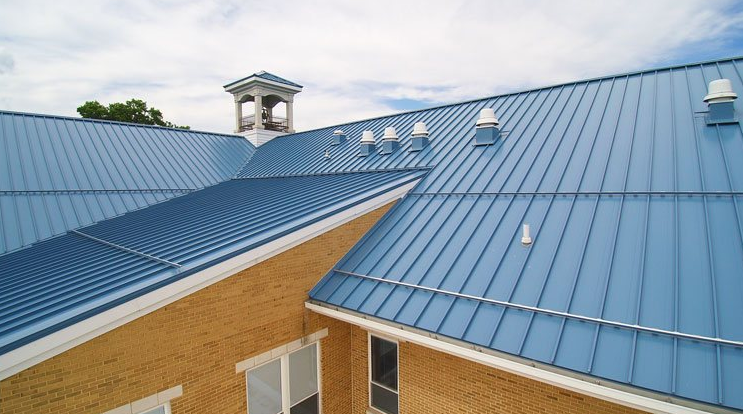Planning a commercial roofing project can seem daunting, but with a clear, step-by-step approach, you can ensure a smooth and successful process. Whether you’re installing a new roof or replacing an old one, careful planning is crucial to achieve the best results. Here’s a comprehensive guide to help you plan your commercial roofing project effectively.
1. Assess Your Needs
Before diving into the project, it’s essential to assess your roofing needs. This involves understanding the current condition of your roof, determining the type of roofing material that suits your building, and evaluating any specific requirements or challenges.
Steps to Take:
- Inspect the Existing Roof: Look for signs of damage, leaks, or wear and tear. Consider hiring a professional to conduct a thorough inspection.
- Identify Your Goals: Determine whether you need a new roof, repairs, or maintenance. Decide if you want to enhance energy efficiency, improve aesthetics, or address specific issues like leaks or insulation.
2. Set a Budget
Establishing a budget is a critical step in planning your commercial roofing project. A well-defined budget helps you manage costs and make informed decisions throughout the process.
Steps to Take:
- Obtain Quotes: Contact several roofing contractors to get detailed quotes based on your project’s scope. Ensure the quotes include all potential costs, such as materials, labor, and any additional services.
- Consider Contingencies: Allocate a portion of your budget for unexpected expenses, such as hidden damage or unforeseen complications.
3. Choose the Right Roofing Material
Selecting the appropriate roofing material is vital for the longevity and performance of your roof. Consider factors such as durability, energy efficiency, and maintenance requirements.
Popular Options:
- TPO (Thermoplastic Olefin): Known for its energy efficiency and durability, TPO is a popular choice for flat roofs.
- EPDM (Ethylene Propylene Diene Monomer): This rubber roofing material is highly durable and resistant to extreme weather conditions.
- Metal Roofing: Offers excellent longevity and resistance to harsh elements, ideal for commercial buildings.
4. Hire a Reputable Roofing Contractor
Choosing the right roofing contractor is crucial for the success of your project. A reputable contractor will ensure quality workmanship and adherence to project timelines.
Steps to Take:
- Research Contractors: Look for contractors with experience in commercial roofing and a solid reputation. Check online reviews, ask for references, and verify their licensing and insurance.
- Review Proposals: Compare proposals from different contractors, paying attention to the scope of work, materials used, and warranty offered.
5. Obtain Necessary Permits
Depending on your location and the scope of the project, you may need to obtain permits before starting work. This step ensures that your project complies with local building codes and regulations.
Steps to Take:
- Consult Local Authorities: Contact your local building department to determine the necessary permits and regulations for your project.
- Submit Applications: Complete and submit any required permit applications, and ensure all approvals are in place before work begins.
6. Plan for Project Execution
Effective project execution requires careful coordination and communication between you and the roofing contractor. Ensure that all aspects of the project are well-organized and managed.
Steps to Take:
- Create a Timeline: Develop a detailed timeline for the project, including key milestones and completion dates.
- Communicate Clearly: Maintain open communication with your contractor throughout the project to address any issues or changes promptly.
7. Inspect and Maintain Your New Roof
Once the project is complete, conduct a thorough inspection to ensure everything meets your expectations. Regular maintenance is crucial to extending the lifespan of your new roof.
Steps to Take:
- Conduct a Final Inspection: Check for any issues or defects and address them with your contractor.
- Schedule Regular Maintenance: Set up a maintenance plan to keep your roof in good condition and address any potential problems early.
Conclusion
Planning a commercial roofing project involves several critical steps, from assessing your needs and setting a budget to choosing the right materials and hiring a reputable contractor. By following this guide, you can ensure a successful project and enjoy the benefits of a well-installed, high-quality roof.
Ready to start your commercial roofing project? Contact Old Time Roofing today to schedule a consultation. Our team of experts is here to guide you through every step of the process, ensuring a seamless and successful project. Call us at or visit our website to get started and protect your business with a top-notch roof!
This post was written by Ted Williams! Ted is the owner of A Old Time Roofing which is the premier roofing company that offers Commercial Roofing in St Petersburg! Ted is a Master Elite Weather Stopper GAF Roofing Contractor, a double award winner of Best Steep-Slope Contractor from GAF and achiever of Master Elite Consumer Protection Excellence from GAF. He has been serving the Pinellas County area since 1978. Old Time Roofing has a tradition of quality workmanship, servicing residential and commercial properties.

